Yamanashi Wine ~Asaya Winery~
Recently, Japanese food and wine has been attracting attention overseas as it has been registered as an intangible cultural heritage.
Wine is made in Yamanashi, Japan, and is very popular both in Japan and worldwide. Katsunuma, located in Koshu City, Yamanashi Prefecture, famous for its domestic wine, originally operated mainly on sericulture and in the rice industry.
However, due to the industry change and the difficulty to continue in this field, they started grape cultivation around in the 1920s.
Katsunuma’s viticulture is recommended by the country. Grape cultivation in Katsunuma is made up of various natural conditions, such as the drainage of the alluvial fan, the warm sunlight, the huge temperature gap between the day, and the perfect wind flow, which are the characteristics of this land.
The Asaya Winery we visited this time had a wine cellar with a long history built by the current representative’s grandfather in 1923, and stocks of the wine were produced there.
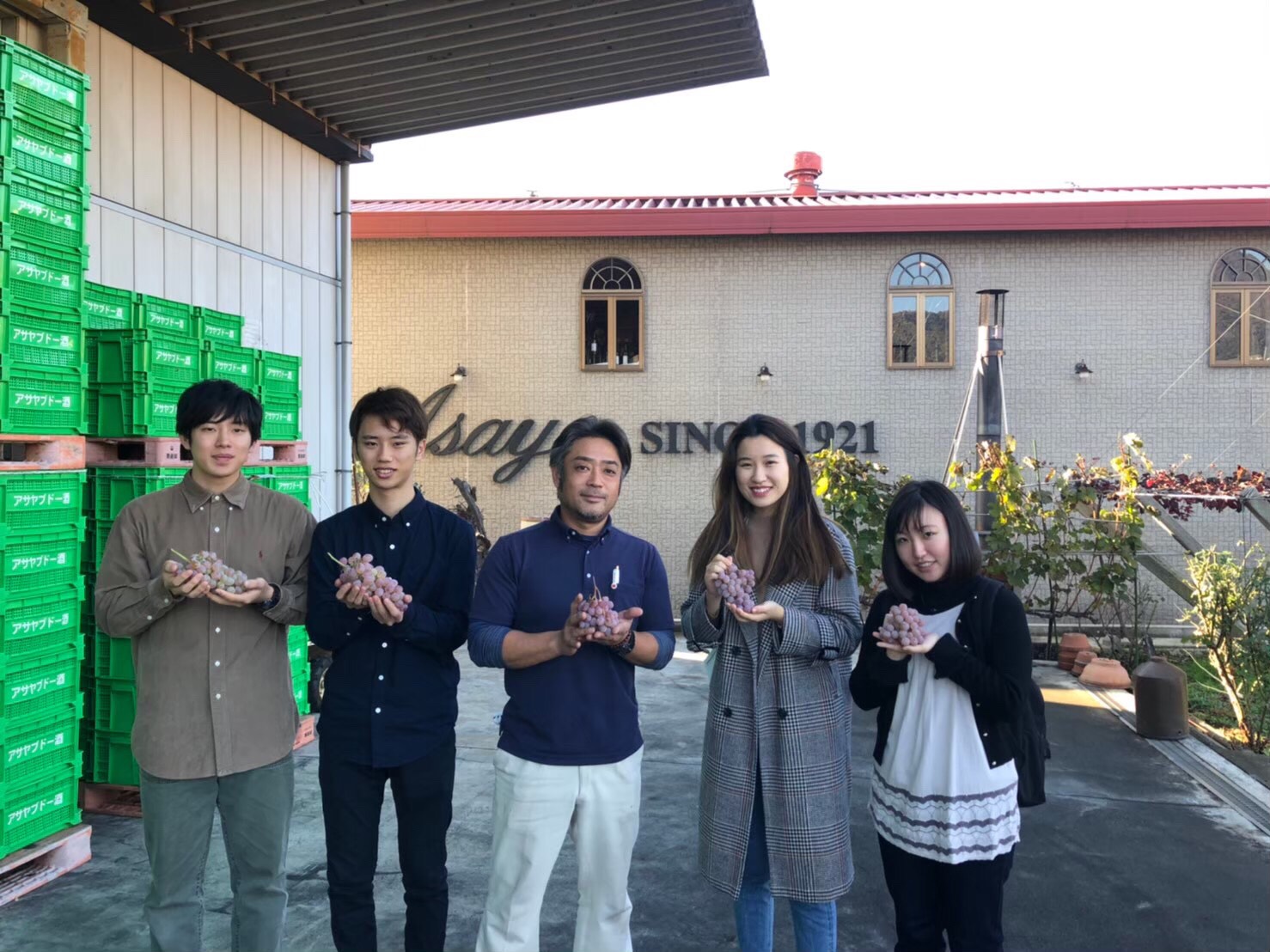
Because of the groundwater flowing around, the summer is cool, the winter warm, and the temperature does not change much throughout the year. The capacity of the cellar is about 60,000 bottles. 80% of them are Vintage and 20% are Nouveau. The oldest Vintage wines were 40 years old.
Next, we will talk about Yamanashi’s original wine, the “Koshu Wine”. The Koshu grape variety was originally developed to suit Yamanashi’s environment.
Since Koshu grapes have a lighter taste than others, Koshu wines are made by squeezing well.
This time, we were able to taste the original wine of “Katsunuma-Koshu Sur Lie”, using Katsunuma-Koshu grapes produced in Katsunuma where Asaya Winery is located. The taste of Katsunuma Koshu grapes changes slightly depending on the year it was producted, so it is recommended to compare them.
Of course, each one has its own reputation for his own taste, but the 2016 “Katsunuma Koshu Sur Lie” has received the most favorable reviews. It is a dry wine with a perfect balance of sweetness, astringency and sourness.
The writer felt that a good hint of acidity was significant, which made it easy to drink. But, on the other hand, some crews valued the 2017 production to be more delicious and thought that it would be a real pleasure of the Yamanashi Winery Tour to compare their drinks and discuss each impression.
The trademark of Asaya Winery is not only “Katsunuma Koshu Sur Lie”. Sweet fruit liquor called “Iki-iki Yamanashi” is also popular for people who aren’t good at wine.
Since Japanese food has been registered as a World Heritage Site in 2013, as the popularity of Japanese food has spread throughout the world, attention has been drawn to Japanese unique sake that goes well with the traditional food.
Yamanashi wines, which are synonymous with Japanese wines, is not very strong in taste, so they can be used with a variety of foods. They can play a role in enhancing the taste of the ingredients when combined with the cuisine.
Therefore, they are compatible with Japanese food that makes use of the taste of the ingredients. Since wine is a popular alcohol in Yamanashi, it is said that wine is loved on a daily basis along with salty pickles.
Speaking of Japanese seasonings, the classic miso is also a fermented food like wine, so it is said to go well with Yamanashi wine. Moreover, the people of Yamanashi often accompanies Yamanashi wine with Italian food.
Meanwhile, there are about 300 wineries in Japan and about 80 in Yamanashi alone, and competition in the domestic wine market is intensifying.
Asaya Winery is well-received by many tourists, and its wine tourism is also highly valued. A winery shop, one of the popular parts of Asaya Winery, was opened 12 or 13 year ago. It is open not only on weekdays, but also weekends, and winery tours are done by the manufacturing staff. When we visited, we were carefully guided and explained.
In addition, the exhibits of old wine-making machines used in the early Showa era and certificates of numerous contests are also attractive. It is said that winemaking is hard work and manual labor, but winning the contest is a great pleasure as he can realize his position.
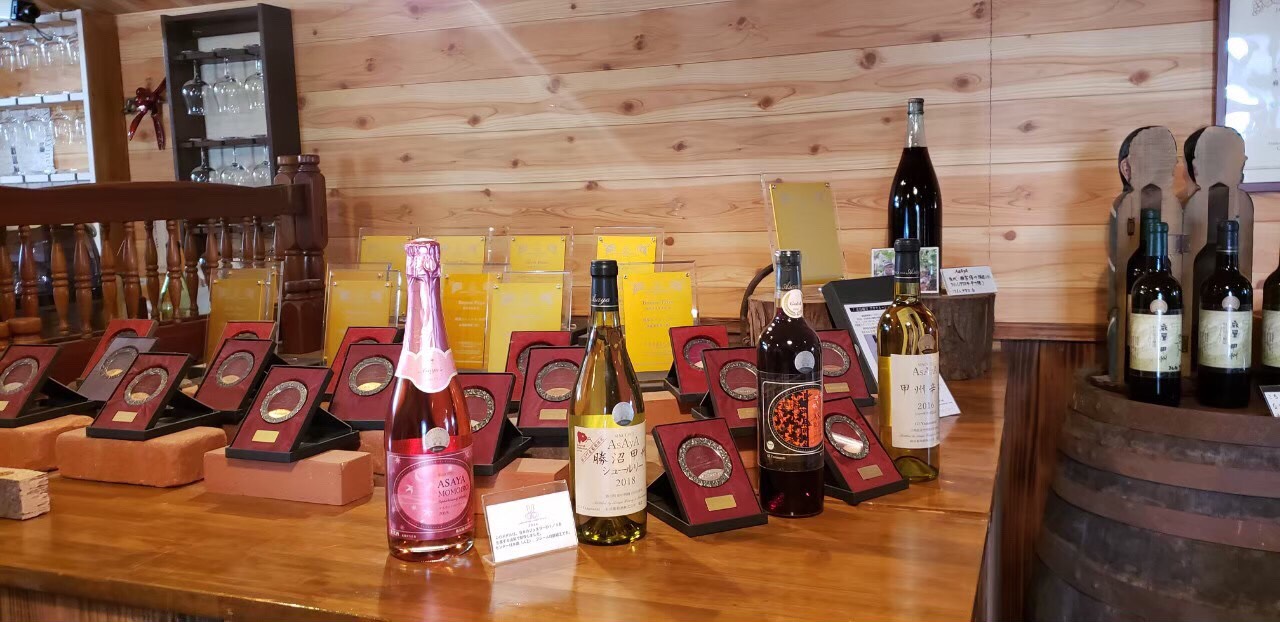
Moreover, since winery has become a cultural origin, several attempts has been made, such as holding charity events through alcohol, exchanging events with local children, and holding wine film festivals by the Katsunuma Wine Association to which the winery of Katsunuma belongs.
On the other hand, in recent years in Japan, in order to protect Yamanashi brand grapes, a system that guarantees the quality of “GI Yamanashi (Geographical Identification)” has been created, and the value of Yamanashi grapes has been actively enhanced. The company also aims to make consumers aware of this branding.
One of the most important aspects of Mr. Amemiya, who runs Asaya Winery, is establishing a certification system for Yamanashi wine. The aim is to protect the brand of wine made in Yamanashi and raise its profile to consumers.
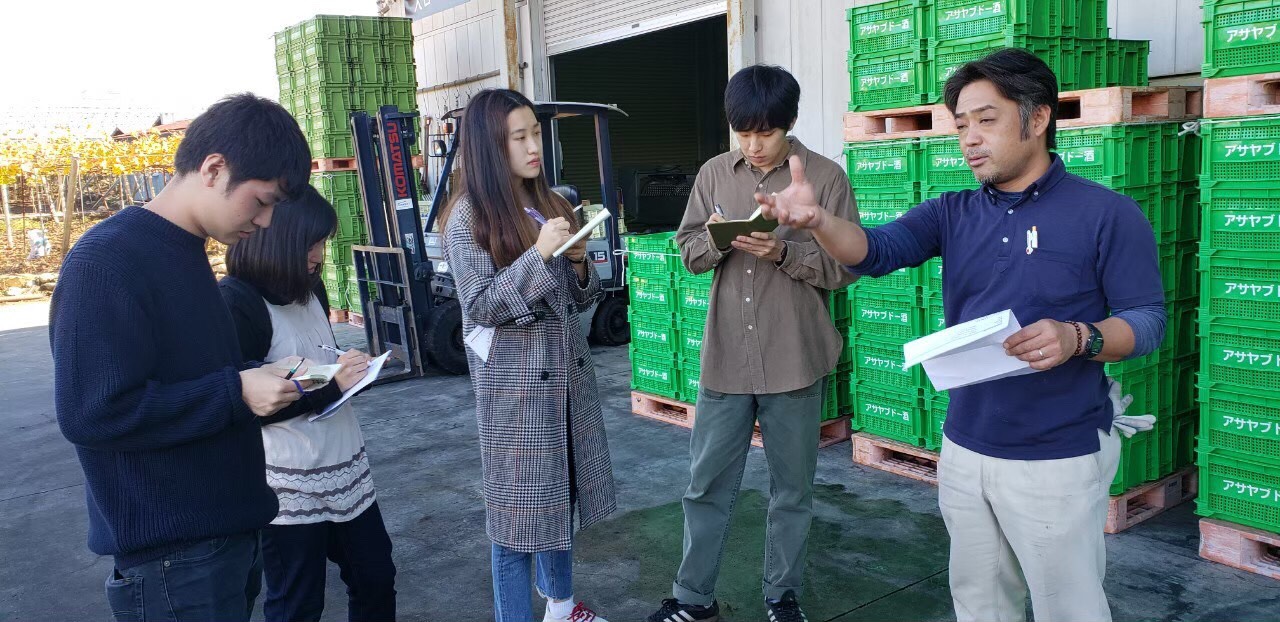
There are several certification systems. One example of the certification systems is the aforementioned, GI Yamanashi. Geographical Identification, as the name implies, is a system that protects Yamanashi wine. About five years ago, Yamanashi was the first place in Japan to receive a geographical indication for wine.
The brand name is engraved on the label of the wine brewed, stored, and packaged using grapes from Yamanashi Prefecture. Since the national tax office manages the geographical labeling of alcoholic beverages, the quality is guaranteed by the country and it is a nice system that consumers can rest assured. Mr. Amemiya said, “This is an initiative to raise awareness not only for producers but also for consumers.”
Another system is the Koshu City Origin Named Wine Certification System. This system authenticates wine made from grapes grown in Koshu, which protects Koshu wine brands.
In this way, efforts are being made to protect Yamanashi wines by the whole country, prefecture and city. Mr. Amemiya said, “Although there is a certification system, wine rating is still difficult.” This is due to the Japanese-specific notion that traditional lands shouldn’t be relinquished to receive a high rating. However, it is Mr. Amemiya’s true intention that consumers who are rated will be better known.
What is the best for Yamanashi wine? Mr. Amemiya will keep on pondering, doing activities with the Asaya Winery.
Written by Ayaka Sato, Dagyeom Kim, Kanji Tsuchiya, Kohei Miyauchi and Yurina Shida
Edited by Rei Goto
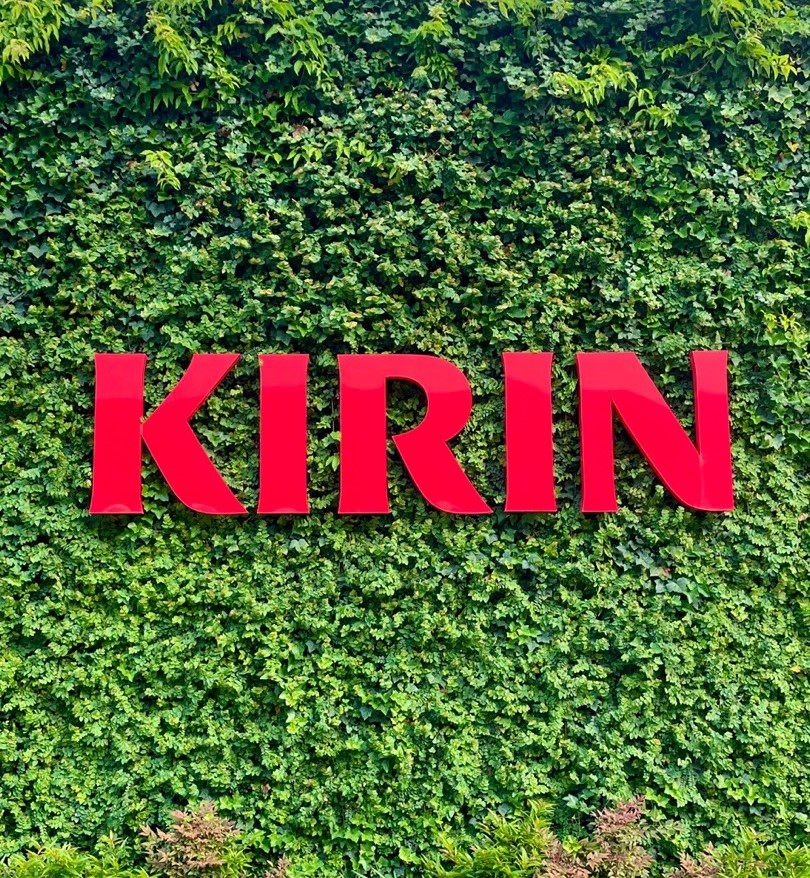
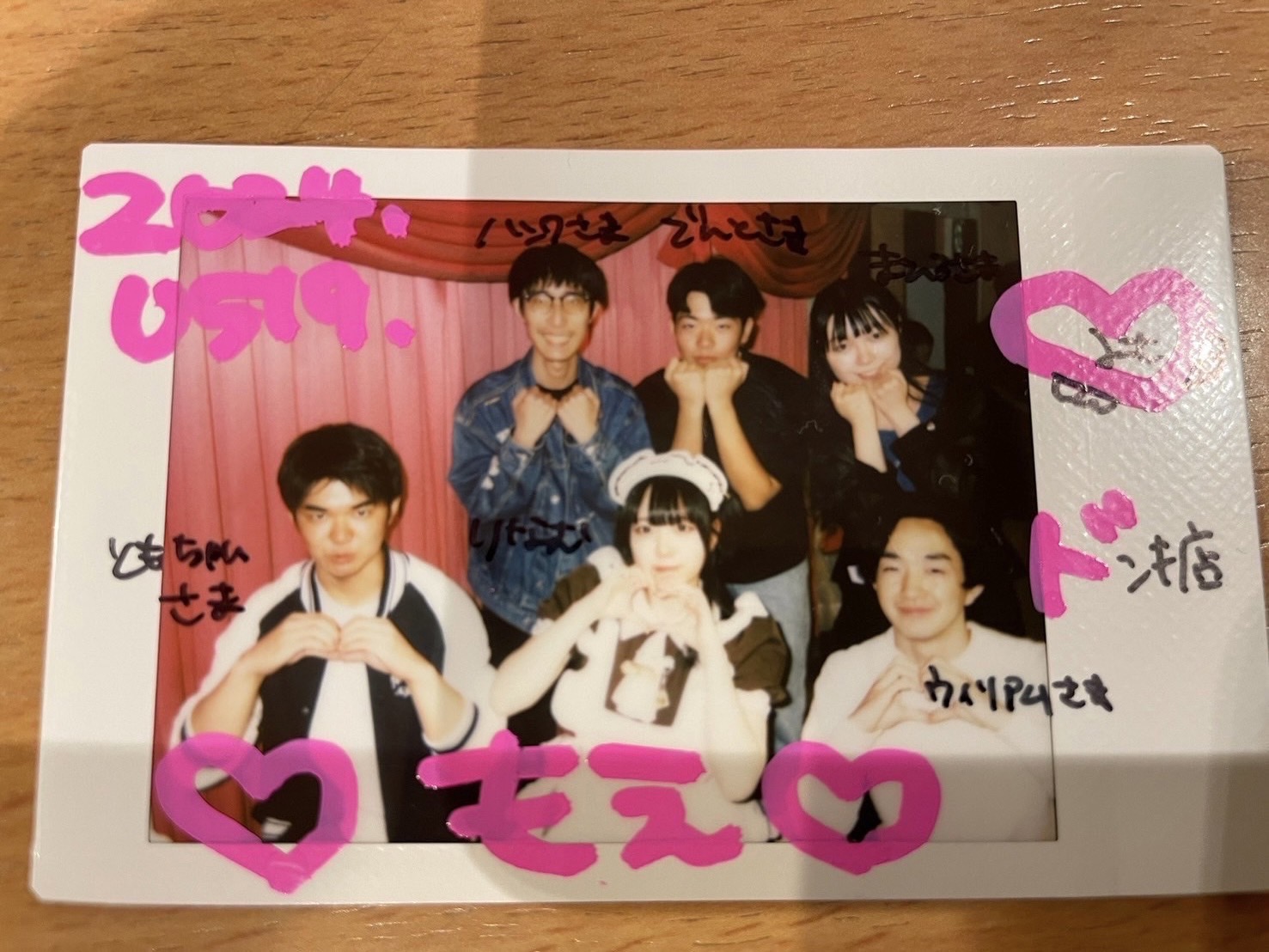

Hallo und vielen Dank für dieses Blog ist eine wahre Inspiration .. Tomasina Waldon Clerissa